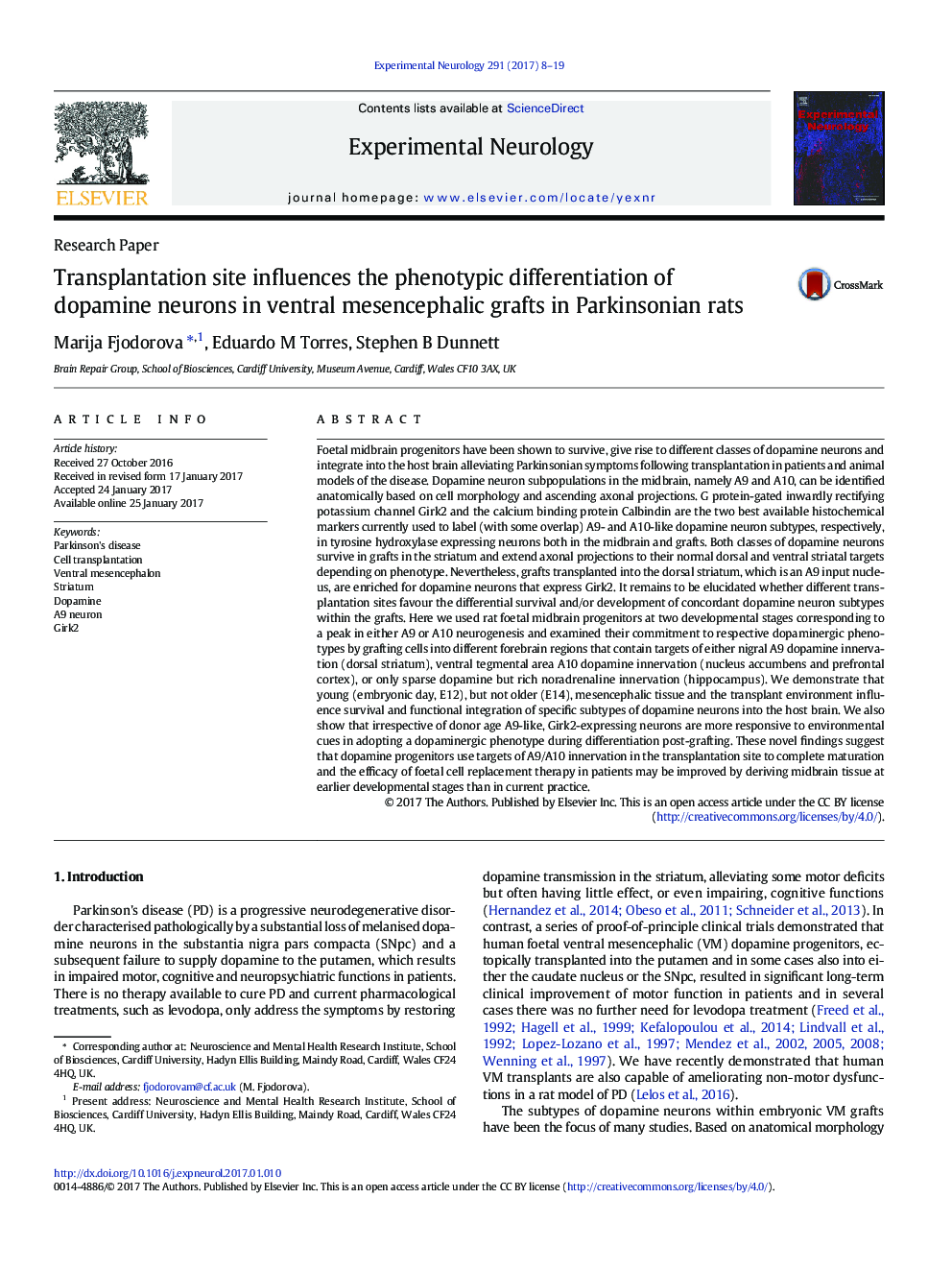| کد مقاله | کد نشریه | سال انتشار | مقاله انگلیسی | نسخه تمام متن |
|---|---|---|---|---|
| 5629316 | 1580148 | 2017 | 12 صفحه PDF | دانلود رایگان |

- Younger VM donor grafts are bigger and with enhanced A9-like dopamine neuron yield.
- A9:A10-like dopamine neuron ratios in VM grafts vary between transplantation sites.
- Dorsal striatum promotes A9-like dopamine neuron differentiation in VM grafts.
- Nucleus accumbens slightly enriches grafts with A10-like dopamine neurons.
- Transplantation site influences distribution of A9- and A10-like neurons in grafts.
Foetal midbrain progenitors have been shown to survive, give rise to different classes of dopamine neurons and integrate into the host brain alleviating Parkinsonian symptoms following transplantation in patients and animal models of the disease. Dopamine neuron subpopulations in the midbrain, namely A9 and A10, can be identified anatomically based on cell morphology and ascending axonal projections. G protein-gated inwardly rectifying potassium channel Girk2 and the calcium binding protein Calbindin are the two best available histochemical markers currently used to label (with some overlap) A9- and A10-like dopamine neuron subtypes, respectively, in tyrosine hydroxylase expressing neurons both in the midbrain and grafts. Both classes of dopamine neurons survive in grafts in the striatum and extend axonal projections to their normal dorsal and ventral striatal targets depending on phenotype. Nevertheless, grafts transplanted into the dorsal striatum, which is an A9 input nucleus, are enriched for dopamine neurons that express Girk2. It remains to be elucidated whether different transplantation sites favour the differential survival and/or development of concordant dopamine neuron subtypes within the grafts. Here we used rat foetal midbrain progenitors at two developmental stages corresponding to a peak in either A9 or A10 neurogenesis and examined their commitment to respective dopaminergic phenotypes by grafting cells into different forebrain regions that contain targets of either nigral A9 dopamine innervation (dorsal striatum), ventral tegmental area A10 dopamine innervation (nucleus accumbens and prefrontal cortex), or only sparse dopamine but rich noradrenaline innervation (hippocampus). We demonstrate that young (embryonic day, E12), but not older (E14), mesencephalic tissue and the transplant environment influence survival and functional integration of specific subtypes of dopamine neurons into the host brain. We also show that irrespective of donor age A9-like, Girk2-expressing neurons are more responsive to environmental cues in adopting a dopaminergic phenotype during differentiation post-grafting. These novel findings suggest that dopamine progenitors use targets of A9/A10 innervation in the transplantation site to complete maturation and the efficacy of foetal cell replacement therapy in patients may be improved by deriving midbrain tissue at earlier developmental stages than in current practice.
Journal: Experimental Neurology - Volume 291, May 2017, Pages 8-19